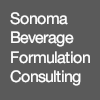3 Takeaways for Brands Amid Changes at FDA

The food industry is evolving — and the government agencies that regulate it are trying to keep up.
Last week the Food and Drug Administration (FDA) and The U.S. Department of Agriculture (USDA) announced that they reached a formal agreement aimed at making the oversight of food more efficient and effective. The announcement followed the FDA’s own publication of a draft guidance on how to issue food recalls, which serves to improve food safety, one of four pillars outlined in the agency’s recently announced 2018 policy roadmap.
To make sense of this recent flood of guidances and announcements, we spoke with a few industry experts to help us break down the regulatory and political jargon and explain what it could potentially mean for business leaders.
1. Improving food safety and health remains a top priority.
The FDA’s role in protecting the food supply was first enhanced by the 2011 passage of the Food Safety Modernization Act (FSMA), which provides greater emphasis on preventing risk as well as utilizing enforcement tools when risks arise. FSMA is a key element of FDA’s risk-based approach to product regulation, but as FSMA regulations have rolled out — though some rule enforcements are being delayed — the FDA is realizing there are still some growing pains to overcome.
First the increase in paperwork from brands trying to show their compliance with FSMA resulted in a backlog at the agency. Then, late last year, the FDA came under fire after a government report criticized the agency for slow and inconsistent recall notices. The FDA was already under scrutiny about how the Trump administration’s overall desire to decrease government regulations could potentially impact its ability to keep the food system safe.
“Food is a relatively non-partisan issue. Everyone has to eat. Everybody has a risk of being harmed by food that isn’t safe,” Charles M. Breen, who formerly worked as the FDA’s Seattle district director and is now an expert regulatory consultant for food companies on FDA matters, said in regards to questions about political concerns.
To ease worries, the FDA said it is working to enrich these regulatory and enforcement strategies to include more efficient risk management, improved nutrition and broader consumer choices. Though the FDA’s expectation of what needs to be done when there is a health risk hasn’t changed, its process has been compressed to be stronger, faster and more efficient. Prior to the guidance, for example, the language around recall notices read as more of a suggestion than a demand.
“Now it’s, ‘Get this to us by this time.’” Breen said. “The agency recall staff are demanding versus asking for information… So far as I can tell the FDA will not hesitate on its own authority, which has been provided a lot sharper teeth for taking action right now.”
With the 2018 strategic policy guideline, a tighter focus and more staffing to better support FSMA changes, Breen suggest brands now more than ever take a closer look at and reevaluate their prevention plans.
2. Communication is king.
Most brands and suppliers want to be in compliance with FDA regulations, but sometimes they are confused in the best way to do so. In the name of being better partners, the FDA is looking to work with other government agencies and the industries it oversees to get everyone on the same page.
Food industry leaders have long called for clearer FDA rules — without unnecessary red tape and regulations — in order to protect themselves, their profits and their consumers. Now the FDA has heeded their call. Its agreement with the USDA aims to potentially reduce the number of establishments subject to dual regulatory requirements of USDA and FDA. For example, according to the FDA, a facility that produces both chicken noodle soup and tomato soup is subject to regulation by both agencies under the current regulatory system. The collaboration efforts would potentially change that.
The partnership announcement also suggests that there may be more agency-to-agency collaboration regarding GMO-products and biotechnology, according to Steven Shapiro, a regulatory attorney with Rivkin Radler LLP.
“I assume that it is going to work the way that organic [policy] currently works,” Shapiro said. “For the most part FDA regulates product labels but the USDA regulates the organic claims on the product labels. I would assume what this document is talking about is that the FDA and USDA are going to do the same thing for [this].”
The FDA is also improving its collaboration efforts with the industry itself. One example of this commitment can be seen through the FDA’s pledge to publish more best-practice guidelines to act as roadmaps for brands. The practice of issuing official guidances is not new for the FDA, but its frequency has gone up and is expected to increase further, according to Breen. In the past six months, the FDA has issued guidances about topics ranging from the safety of peanuts in baby food to how to adhere to nutrition labeling changes to the best ways to issue a recall notice.
To further issue more helpful documents and provide more in-person feedback, the FDA has also prioritized hiring efforts in 2018. Breen noted many open positions are based at FDA headquarters rather than for field agents. He believes this is a sign that the agency seeks to tackle the backlog of regulatory paperwork resulting from brands submitting documents to the wrong departments or incorrectly filling out forms — both of which are a result of a lack of guidance around navigating FSMA.
Increased communication is not to be confused with increased action, however. Some of the guidances themselves don’t offer many changes from their respective original standard operating procedures, according to Shapiro. Specifically speaking to the recent guideline on how to issue recall notices, he said he did not see many process changes in the report and that it served more as a condensed resource for brands and manufacturers.
“There has always been a focus on communication. Hopefully that will continue,” Shapiro said. “My experience is that there has been very little [action] going on with the FDA lately. Even with publishings, there really hasn’t been that much happening over the last few months. I don’t know if that is because of the new administration.”
As the agency continues to work on its active listening skills, both Breen and Shapiro recommended that brands continue to comment and provide feedback on guidances and FSMA enforcements — even if it’s unclear whether the FDA will actually act on those suggestions.
3. The FDA is embracing a new word: Flexibility.
The new strategic guidelines and policies show that the agency is realizing that the food space is not black and white and that the agency is ready “for some degree of disruption,” according to Breen.
Over the past few years, the agency has already started to show off its flexible nature in how it defines certain foods and enforces regulations.
In their quest to meet the needs of consumers, up-and-coming brands have butted up against out-of-date FDA policies around names, statements of identity and health claims over the past few years.
Breen cited snack brand producer KIND’s fight to market their products as “healthy” and JUST Mayo’s quest to to call its product “mayonnaise” as examples of how the FDA is recognizing the need to evolve to better address the food climate of today.
“That kind of flexibility is new and much of it comes about because the 2011 FSMA act. It really changed the game not just for the industry but for the agency as well,” he said. “The 2018 strategic policy roadmap is a reflection of some of those changes that will come about.”
In addition to embracing flexibility with its policy and naming frameworks, Breen said the agency is also being flexible in how it enforces its preventive regulations. Though the FDA is flexing its muscles when there is evidence of a public health risk, it now appears much more willing to discuss preventive measures and how to best comply with regulations — before there is a problem — with firms.
What the FDA has gained in flexibility, however, it lacks in speed. Take nutrition labeling, which was delayed until January 2020. Shapiro said he thinks there are still holes in the policy, even though the agency took a noted step in identifying nutritional and labeling needs that better represent today’s food system.
“They’ve put off the nutrition label in part to make it easier to give companies more time to comply, but I still think there are questions. I’m not sure everything that needs to be addressed has been addressed,” he said. “There are still issues with the added sugar claims and the understanding of added sugar versus total sugar; there is a need to understand there are healthy fats; and there are concerns about the definition of fiber and whether the FDA’s definition is too limited.”
The takeaway: Experts noted the FDA wants to work with brands who want to work with them and want to share insights on hardships with them. They advised brands to not only look at the agency as a dictator of regulations and preventive measures, but also as a mentor or advisor on ways to comply with them.












